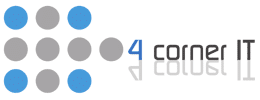5 Productivity Tips for Google Docs

While most people are used to using Microsoft Word for their writing and editing needs, Google Docs remains a worthy alternative. Since everything is in the cloud, it’s a great way to collaborate with other users and share documents. It will also free up some space on your computer. Here are a few tips for […]
Folder Configuration – Computer Tip of the Day

Folder Configuration A simple issue that can cause stress during the workday is organization. It’s simple to see when someone is disorganized in the office–their papers are everywhere, perhaps their coat is strewn on a table, their desk drawers are half-closed. But having an unorganized computer system is just as detrimental to productivity. It’s a […]
To Boost Productivity, Have You Tried Automation Apps For Multitasking?

Companies regularly aim to boost productivity among employees. Employees themselves often look for ways to achieve more in a shorter amount of time, free up time for other activities, and avoid getting bogged down in costly errors and inefficiencies. There’s no shortage of articles advising people on how to become more productive. One strategy is […]
BYOD Policies, Part 2: 3 Tips to Keep Your Program Running Smoothly

In Part I, we discussed how BYOD policies are becoming more common across a multitude of businesses and industries, and the downfall of BYODs. However, being that these programs are so popular, we also wanted to share a few helpful hints about what you can do to make the most of your BYOD policies if […]
How Technological Change Affects the Productivity of Labor

There is an ‘instant’ feeling to so much of what we do and expect to be done in life that this has kind of clouded the way we interact with one another. For example, if we receive an email, the sender expects an instant reply and if we don’t reply within an often very narrow […]

